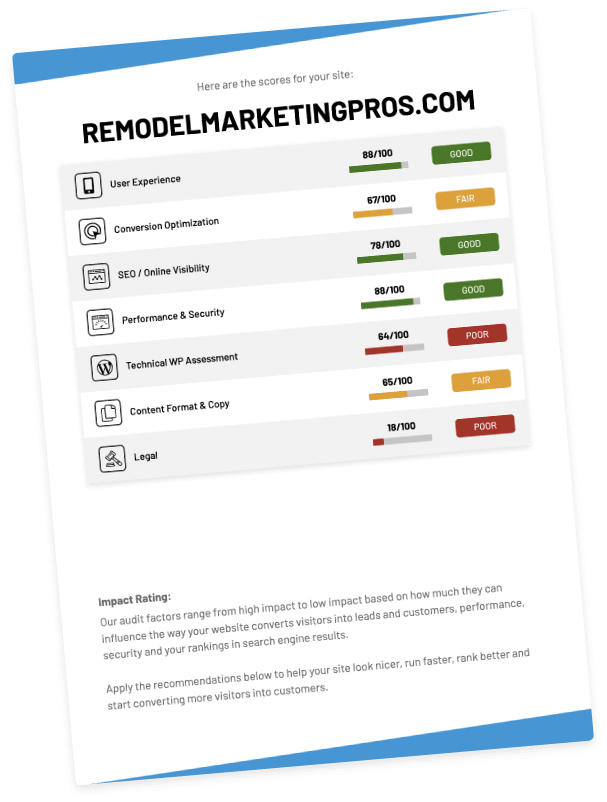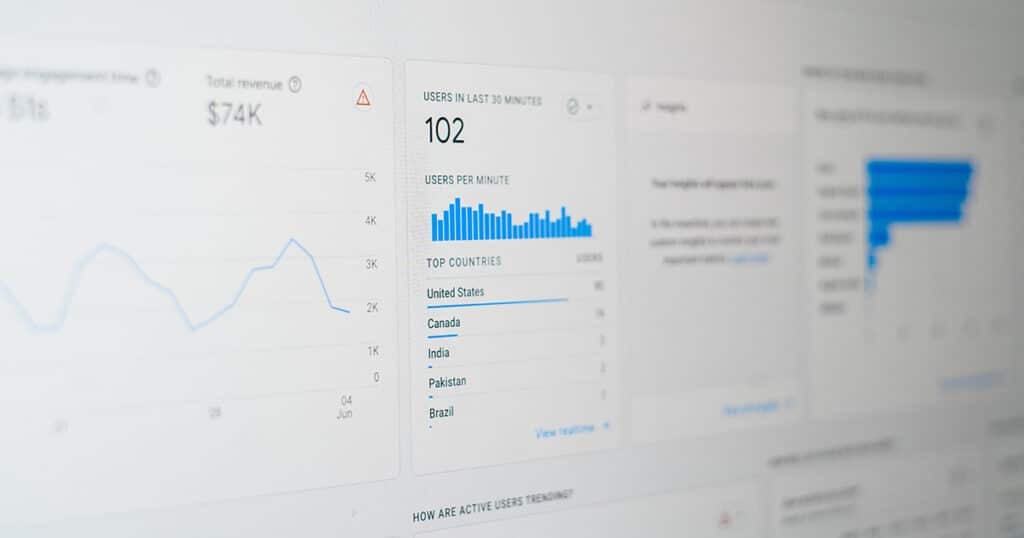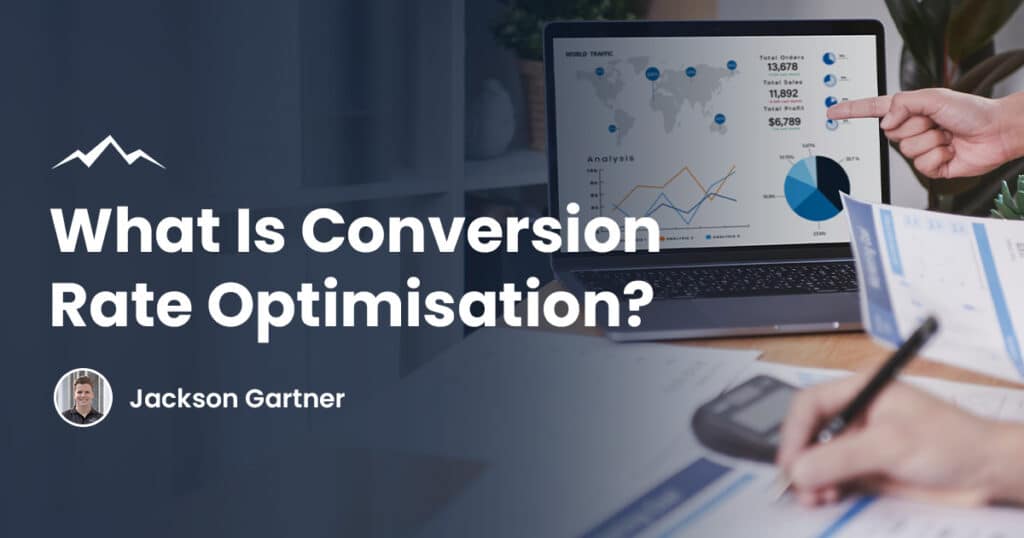Every business wants their website to turn visitors into paying customers, but achieving this isn’t always straightforward.
Many website owners focus on driving more traffic to boost leads and sales. However, improving your website’s conversion rate can often deliver better results.
This is where Conversion Rate Optimisation (CRO) can help.
CRO is the process of enhancing your website to increase the percentage of visitors who complete a desired action.
This could be making a purchase, signing up for a newsletter or any other goal that moves your business forward.
In this guide, we’ll dive into what CRO is, why it’s crucial for your website and how you can start implementing effective strategies to boost your online conversion rates.
By focusing on CRO, you can make the most of your existing traffic, ultimately leading to higher revenue and better user satisfaction.
What Is Conversion Rate Optimisation (CRO)?
Conversion Rate Optimisation (CRO) is the practice of improving your website to increase the percentage of visitors who complete a desired action.
This could be anything from making a purchase, signing up for a newsletter, filling out a contact form or any other goal that supports your business objectives.
The main focus of CRO is to turn more of your existing website visitors into customers, rather than just increasing traffic.
At its core, CRO is about understanding how users interact with your site, identifying obstacles within the conversion funnel and making data-driven changes to enhance the user experience.
You can significantly improve your website’s conversion rate by optimising key elements on your pages, such as the layout, headlines and call to action (CTA) buttons.
How to calculate your website’s conversion rate:
Conversion Rate = (Number of Conversions / Total Visitors) × 100
For example, if your site has 1,000 visitors in a month and 50 of them complete a desired action, your conversion rate would be 5%.
Improving this rate through conversion optimisation means making incremental changes that lead to a higher percentage of website visitors taking that action.


Why CRO Matters for Your Business
Conversion rate optimisation is crucial for any business looking to maximise the value of its online presence.
Many of our clients are often spending thousands of dollars per month on an SEO agency or Google Ads specialist before they reach out to us in an effort to increase their online sales or leads, only to realise that a poor website conversion rate is holding them back.
Here’s why focusing on CRO efforts can have a significant impact:
Increased Revenue
Improving your conversion rate means more of your website visitors are completing desired actions, such as making a purchase, signing up for a newsletter or requesting a quote.
This leads to increased conversions without the need to attract additional traffic.
For example, if your site’s conversion rate improves from 2% to 4%, you’ve effectively doubled your sales or leads without spending a penny more on attracting new visitors.
By optimising key aspects of your site (like landing pages, pricing pages or CTA buttons) you can boost conversions and increase revenue.
This makes CRO one of the most cost-effective growth strategies, as it leverages your existing traffic to generate higher returns.
Cost Efficiency
Attracting new customers through paid marketing channels like Google Ads or through organic efforts like SEO can be expensive.
While these strategies are important for driving traffic, they also come with ongoing costs that can add up quickly.
On the other hand, CRO allows you to lower your customer acquisition costs by converting more of the visitors you already have.
By focusing on conversion optimisation, you can make the most of your existing audience, reducing the need for constant spending on new traffic sources.
This efficient approach to customer acquisition not only helps in increasing conversions but also ensures a better return on investment for all your marketing efforts.
Improved User Experience
A successful CRO strategy often involves making enhancements that improve the overall user experience on your website.
By understanding how users interact with your web pages, whether through heat maps, user feedback, or data from tools like Google Analytics, you can identify pain points that hinder conversions.
Refining elements such as page speed, navigation and mobile responsiveness can lead to a more enjoyable experience for visitors.
Not only does this make your site more effective at converting visitors into customers, but it also helps build trust and satisfaction among your audience.
An improved user experience can result in happier customers, increased loyalty and even a reduction in bounce rates, all of which contribute to a healthier bottom line.


Key Elements of an Effective CRO Strategy
A successful conversion rate optimisation strategy involves more than just tweaking a few elements on your website.
It requires a comprehensive approach that combines data analysis, user testing and web design improvements to drive meaningful results.
Here are the key elements that make up an effective CRO strategy:
Data Analysis
Understanding how users interact with your website is the foundation of any CRO strategy.
Tools like Google Analytics allow you to track user behaviour, identify drop-off points and uncover what’s working and what isn’t.
By analysing data, you can make informed decisions about where to focus your optimisation efforts.
A/B Testing
A/B testing is a critical component of CRO. It involves creating two versions of a webpage and testing them against each other to see which performs better.
This could involve testing different headlines, images, call to action buttons or even page layouts.
A/B testing allows you to experiment with changes in a controlled environment, ensuring that your optimisations are data-driven rather than based on guesswork.
User Experience Design
A strong focus on User Experience (UX) is essential for driving conversions.
UX design considers how users navigate your site, find information and complete desired actions.
By improving the flow and usability of your site, you can guide users more effectively towards conversion points.
This might involve simplifying navigation, improving page load times or creating a more intuitive layout.
Copywriting & Content
The words on your website play a crucial role in persuading visitors to take action.
Effective copywriting and content are key to guiding users through their journey and encouraging conversions.
Clear, compelling headlines, persuasive copy and strong CTAs can make a significant difference in your conversion rates.
Additionally, content that addresses user pain points and highlights the benefits of your product or service can further drive engagement and conversions.

Steps to Implement CRO on Your Website
Optimising your website conversion rate involves a structured approach that focuses on understanding user behaviour, testing changes and refining your site to increase conversions.
Here’s a step-by-step guide to getting started with website CRO:
1. Identify Conversion Goals
Start by defining what actions you want your website visitors to take.
This could be making a purchase, filling out a form or subscribing to a newsletter.
Clearly identifying your conversion goals will help you focus your CRO efforts on the metrics that matter most.
2. Analyse Current Performance
Use CRO tools like Google Analytics, heat maps and user behaviour tracking to gather data on how visitors interact with your site.
Look for key metrics such as bounce rates, exit pages and average conversion rates.
This will help you understand where potential customers are dropping off and where improvements can be made.
3. Test & Experiment
Implement A/B testing or multivariate testing to compare different versions of your web pages.
This could include testing variations of headlines, call to action buttons or even the overall layout of a landing page.
Ensure that your tests are statistically significant and that you run them long enough to gather high quality data.
4. Monitor & Optimise
CRO is an iterative process, so it’s important to continuously monitor your results and make adjustments based on the data you collect.
Regularly review your conversion data to see what’s working and what isn’t.
Use usability tests and user feedback to refine your strategy and make ongoing improvements to your website’s performance.
5. Implement Changes Based on Insights
Once you have gathered enough data and identified the most effective changes, implement them across your website.
Focus on creating high converting landing pages that address user pain points and streamline the conversion funnel.
This might include updating your pricing page, improving the user journey on mobile devices or enhancing the overall value proposition of your offerings.

Common CRO Mistakes to Avoid
While conversion rate optimisation can significantly boost your website’s performance, there are common pitfalls that can undermine your efforts.
Avoiding these mistakes will help you achieve better results and make the most of your CRO strategy.
Ignoring Mobile Devices
With a growing number of users accessing websites via mobile devices, failing to optimise your website with a mobile-first design can seriously hurt your site’s conversion rate.
Ensure that your landing page designs and key web pages are mobile-friendly, with responsive design and fast load times to accommodate all users.
Reach out to our Brisbane web design team if you would like a hand optimsing your website for mobile devices.
Overcomplicating the Process
It’s easy to get carried away with multiple tests and changes at once, but this can make it difficult to pinpoint what’s truly effective.
Focus on one variable at a time, whether it’s a split test on your call to action buttons or adjustments to your web page layout.
Keeping your CRO process simple helps you identify what works without overwhelming your site.
Neglecting User Feedback
CRO isn’t just about data, it’s also about understanding your target audience. Ignoring user feedback can lead to missed opportunities for improvement.
Conduct user research, usability tests and gather insights directly from your visitors to better understand their needs and pain points.
No Clear Conversion Goals
Without clearly defined goals, your CRO efforts can become scattered and ineffective.
Ensure you have specific and measurable objectives for your conversion optimisation efforts such as increasing the number of leads generated or improving the average conversion rate on a particular page.
Not Analysing High-Performing Pages
Focusing only on underperforming pages can lead to missed opportunities on high converting web pages.
Regularly review your website’s conversion rate across all pages, including those that perform well, to identify best practices that can be applied elsewhere.
Insufficient Testing Data
Running A/B tests without sufficient data can lead to unreliable conclusions.
Ensure that your CRO tests reach statistical significance before making any decisions.
This will provide a more accurate understanding of which changes genuinely boost conversions.

Next Steps
Now that you understand the basics of conversion rate optimisation, it’s time to put this knowledge into action.
Start by identifying key areas of your website that could benefit from improvement, such as landing pages, call to action buttons or the overall user experience.
Use analytics and testing tools to gather data on how visitors interact with your site and set clear conversion goals.
From there, begin experimenting with A/B testing, focusing on one change at a time to see what truly impacts your conversion rate.
CRO is an iterative process, so continuously monitor your results and use data to refine your conversion rate optimisation strategies.
Whether you’re just starting out or looking to take your website CRO efforts to the next level, investing time in optimising your conversion rate will help you drive more leads / sales, lower acquisition costs and ultimately drive greater success for your business.
Frequently Asked Questions
What is a good conversion rate?
A good website conversion rate varies by industry but on average a standard conversion rate ranges from 2% to 5% on most websites.
How long does it take to see results from CRO?
CRO results can vary, but you may start seeing an impact within a few days to a few months, depending on the volume of traffic and the nature of the tests being run.
Can CRO be applied to any type of website?
Yes, CRO can be applied to any type of website, including eCommerce sites, service-based businesses and informational blogs. The approach and specific tactics may vary, but the goal remains the same: to increase conversions.
What tools are best for CRO?
Popular CRO tools include Google Analytics for tracking user behaviour, heat maps like Hotjar for visualising how users interact with pages and A/B testing tools like Optimizely to test variations of your content.
How often should I update my CRO strategy?
CRO is an ongoing process. Regularly update your strategy based on new data, user feedback and changes in your business goals. Continuous testing and optimisation are key to maintaining and improving your site’s conversion rate.
To your success,
Jackson




